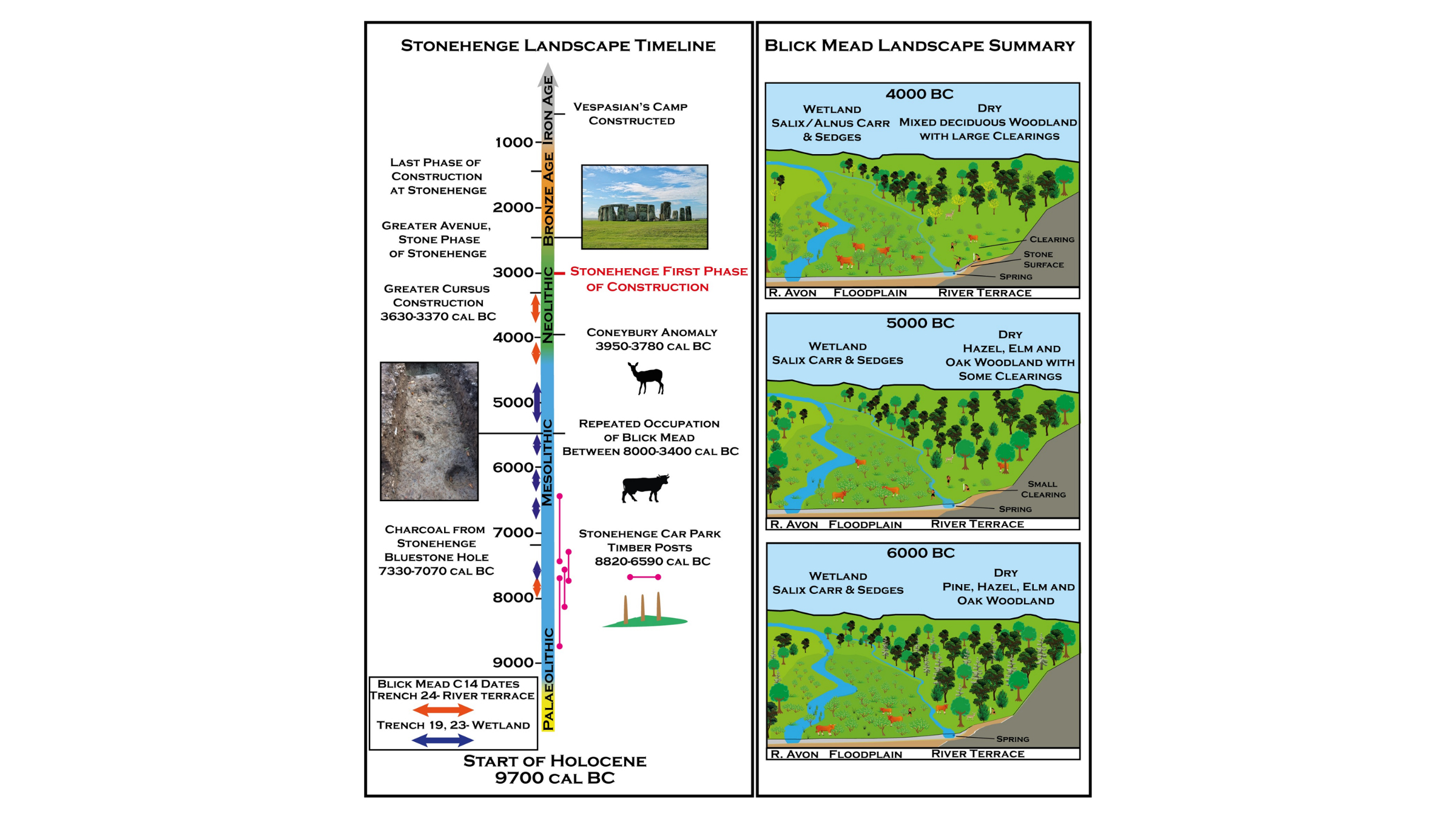Stonehenge was a hunting hotspot long before the monument was built
The region was an important hunting and grazing area for Mesolithic cultures.

Long before Neolithic people erected Stonehenge's majestic bluestones and sarsen stones, Mesolithic, or Middle Stone Age hunter-gatherers frequented the site, using it as a hunting ground. Later, farmers and monument builders moved into the region, a new study finds.
Earlier research had suggested that before Stonehenge was built, the surrounding landscape included a closed-canopy forest. "There has been a long-running debate as to whether the monumental archaeology of Stonehenge was created in an uninhabited forested landscape or whether it was constructed in an already partly open area of pre-existing significance to late Mesolithic hunter-gatherers," the researchers wrote in the study.
Now, the new research shows that the area was historically an open woodland where large herbivores such as aurochs, an extinct cattle species, once grazed. Given the site's high use over time, it's likely that there was continuity between the Mesolithic hunter-gatherers and the Neolithic, or New Stone Age monument builders, the researchers said.
In other words, it's not as if Stonehenge's builders suddenly "discovered" the site for the first time; rather, it appears that people had known about this spot for centuries.
Related: Why was Stonehenge built?
An early form of Stonehenge was built about 5,000 years ago, while the famous stone circle that still stands today was put together in the late Neolithic, around 2500 B.C., according to English Heritage, the U.K. trust that manages the site. Salisbury Plain, the plateau where Stonehenge sits, was considered a sacred area by ancient people, and holds evidence of older structures dating back as far back as 10,500 years ago.
The study centered around Blick Mead, an early hunter-gatherer spot on the edge of the Stonehenge World Heritage Site. Previous excavations of Blick Mead confirmed that Mesolithic people settled there prior to 8000 B.C., and the new research suggests that humans continued to use this area into the Neolithic period.
Get the world’s most fascinating discoveries delivered straight to your inbox.
To investigate Blick Mead, Samuel Hudson, a researcher at the University of Southampton in the U.K., and colleagues dug a newly opened trench at the site and analyzed ancient pollen, spores and DNA, as well as animal remains, found within the samples to learn more about how ancient people used the land during the late Mesolithic, between 5200 B.C. and 4700 B.C.
Their analysis revealed that the area used to have damp meadow conditions that sat next to an open grassland with a deciduous woodland close by, the team wrote in the study. Wild animals would have grazed in those open fields, and hunter-gatherer communities that lived there 4,000 years prior to Stonehenge's construction would have then hunted the grazers, the researchers found.
"The Stonehenge World Heritage Site is globally recognized for its rich Neolithic and Bronze Age monumental landscape, but little is known of its significance to Mesolithic populations," the study's authors said in a statement. But now it's clear that "hunter-gatherers had already chosen part of this landscape, an alluvial clearing, as a persistent place for hunting and occupation."
The study was published online April 27 in the journal PLOS One.
Originally published on Live Science.

Jonathan is the Editor of All About History magazine, running the day to day operations of the brand. He has a Bachelor's degree in History from the University of Leeds. He has previously worked as Editor of video game magazines games™ and X-ONE and tech magazines iCreate and Apps. He is currently based in Bournemouth, UK.



